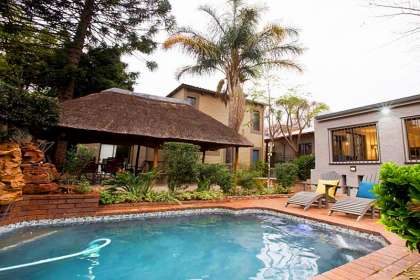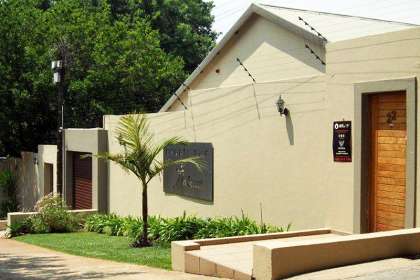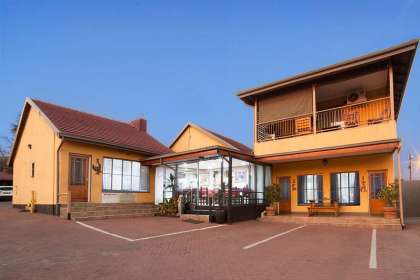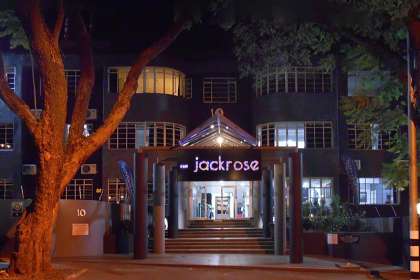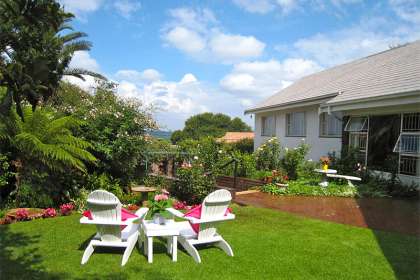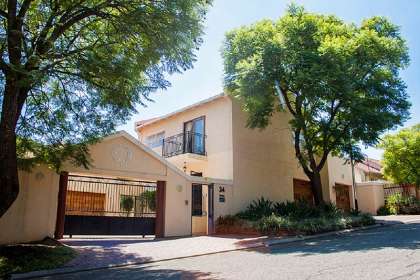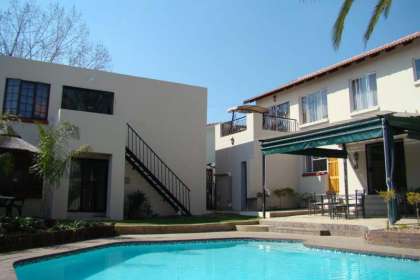The Klipriviersberg Nature Reserve
The Klipriviersberg Nature Reserve
Only 11 kilometres south of the Johannesburgh city you will find what some have called Johannesburgs best-kept, back-to-nature secret, the Klipriviersberg Nature Reserve. The reserve which was proclaimed in 1984 is a 680 hectare stretch of open veld and koppies.
The Bloubosspruit winds its way through the reserve and along with 650 indigenous plants and trees, is home to over 150 different species of birds. The terrain is mainly grassland, interspersed with indigenous shrubs and trees and rocky outcrops. One of the over 50 species of trees found on the reserve is the Buffalo Thorn which is used for several different purposes. Its bark is used for treating sprains, while its thorns have symbolic meaning, symbolising both the future and the ancestors. Its leaves are used to make a tea which is used as an aphrodisiac and legend has it that sheltering under it branches during a storm will keep you safe from lightening as lightening wont strike the tree. A diary from the time was found and indicates that lion, caracal, lynx and genet were found on the farm. Today none of these are present but you are likely to spot mountain rhebuck, duiker, jackal, mongoose, porcupine and dassie in the Reserve.
Klipriviersberg Nature Reserve has a history which can be traced back to the mid 1800s and even further back to the 1500s when the area was occupied by Tswana pastoralists during the Iron Age. Aerial photographs of the reserve show 19 stone-walled settlements which date back to the early 1500s.
Around 1850 one of the early Voortrekkers, Sarel Marais and his family settled in an area just above the Bloubosspruit which is now in the southern part of the reserve. Today there are still remains of the farmstead, these include the original farmhouse, a wagonhouse, an orchard, an irrigation furrow and a cemetery. The simple rectangular farmhouse which originally had a thatched roof was burnt down on two separate occasions, once in 1943 and again in 1980, today only the walls remain. Only one wall remains of the wagonhouse, but this wall is an excellent example of what is known as the pise-de-tere building technique. A low stone wall and two entrance stones mark what was once the orchard. Until 1989 the orchard was planted with peach, pear, fig and pomegranate trees, but these unfortunately no longer exist. Peaches from the orchard were used to make Witblitz which was a type of local schnapps and poplar trees were also grown to be used in building and fencing. Aproximately 500 metres north of the farmhouse lies a now overgrown and vandalised family cemetery where Sarel Marais was buried in 1897 at the age of 83.
In 1895 it was decided to build a dam in the northern end of the reserve, the Vierfontein Dam Scheme was meant to have supplied the needs of the rapidly growing town, but when the Anglo Boer War broke out in four years later in 1899 the plans were permanently shelved. It is interesting to note that had the dam been built as was proposed the suburbs of Mondeor, Alan Manor, Suideroord and Winchester Hills Ext 1 would never have existed. Today you can still see the foundations of the dam wall, which consisted of large stacked quartzite blocks, at the northern end of the reserve. The Bloubosspruit flows through the centre of the wall, through the reserve and out into the Klip River.
The reserve is run by a partnership between the Klipriviersberg Nature Reserve Association, with some 800 members, the Johannesburg City Council and Gauteng Nature Conservation. It has a network of trails running through it, the two longest ranging from 5.8 kilometres to nine kilometres and organised walks take place every second and fourth Sunday of the month. Mountain biking and cross-country groups also enjoy the trails through the Reserve. There are also various activities which take place on the reserve, such as the fun day which is organised by Ecodad, on Environment Day in June, where visitors are given route maps, and answer questions whilst walking around the reserve. Twice a year the Klipriviersberg Nature Reserve Association organises Spring and Autumn days which consist of three-hour walks followed by a social braai (barbecue). Plans are also underway to build stables which will house horses to be used in horse trails as well as for security patrols around the Reserve.
Klipriviersberg Nature Reserve, which has several access points: one near the farmhouse on Impala Drive; one through the Recreation Centre on Peggy Vera Road; and the most popular one, via Frandaph Drive in Mondeor, where the old dam wall is located, is unfenced and is used by locals to walk their dogs. Conservationists working in the reserve say that there have been no reported incidents of vandalism or muggings in the reserve.
For more information please contact:
General Information: Clem Kourie
Tel: +27-82-4582816
Or email: clemkourie@gmail.com
Walks and Guiding: Tony Ferguson
Tel: +27-82-4546114
Mid-Week Guided Walks: Mike Dibb
Tel: +27-72-1752737
Horse Trails: Greg Martin
Tel: +27-82-6450248
Directions from the so-called "concrete" highway.
Either western bypass (N1) or eastern bypass (N12) get to the southern bypass (N12)
Take the Klipriviers Drive off-ramp (R556) and travel south until you get to the traffic light - corner Vorster/Columbine Avenue.
Turn right into Columbine, go under bridge, and go with Columbine (few kms) until the traffic lights at Ormonde Drive (Engen Garage and Black Steers on your left and Dischem on your right)
Turn left at these lights into Ormonde Drive.
Pass Devereux Ave on left and just before the bridge turn left into Frandaph.
Go to end of Frandaph. This is the "Silent Pool" entrance into the reserve.
Directions from M1
Take M1 South - follow signs (Vereeniging - R82)
The M1 ends on Columbine Ave, with Southgate shopping centre on your right.
Turn left into Columbine.
Travel down Columbine Avenue till traffic light at small shopping centre. (Dischem on your left, Black Steers and a garage on your right)
Turn right into Ormonde Drive.
Pass Devereux Ave on left and just before the bridge turn left into Frandaph.
Go to end of Frandaph. This is the "Silent Pool" entrance into the reserve.
NB Ormonde Drive meets Columbine at more than one point - make sure that you turn at the shops!
Verblyf Naby The Klipriviersberg Nature Reserve
Melville Gap Guest House
Self Catering Apartment, Flatlet Accommodation in Melville
11.6km from The Klipriviersberg Nature ReserveMellville Gap Guest House is 'n hanetreetjie van die Boheemse woonbuurt Melville se bekende 7de Straat geleë met sy atmosfeer-atmosfeer, sypaadjie-kafees, gesellige restaurante, antieke/oesjaarwinkels en skemerkelkieklubs, ons is in die perfekte ligg …sien meer vir besprekings / navrae en inligting.
7th Street Guest House
Bed & Breakfast Accommodation in Melville
12km from The Klipriviersberg Nature Reserve7th Street Guest House bied B&B-verblyf in Melville, Johannesburg. Met 13 luukse en suite-kamers wat toegerus is met DSTV, WiFi-internettoegang, verwarmers, haardroërs, waaiers, digitale kluise, koffie-/teegeriewe en yskassies met voorraad... …sien meer vir besprekings / navrae en inligting.
Forest Town Guest Cottages
Self Catering House, Cottage, Chalet Accommodation in Forest Town
12.4km from The Klipriviersberg Nature ReserveForest Town Guest Cottages is geleë in Forest Town, Johannesburg. Hierdie netjiese en gerieflike villas is vir selfsorg, apart en privaat. Een- en twee-slaapkamer villas om gesinne te pas, asook vir reisende sakepersone en toeriste. …sien meer vir besprekings / navrae en inligting.
Marle' Lodge
Bed & Breakfast Accommodation in Alberton, East Rand
13.6km from The Klipriviersberg Nature ReserveMarle' Lodge het 11 dubbel en suite-kamers wat almal pragtig afgewerk is in bypassende Afrika-tema. Twee van die kamers het 'n tussendeur om voorsiening te maak vir gesinne wat saam wil bly. Alle kamers het DStv. …sien meer vir besprekings / navrae en inligting.
The Jack Rose
Hotel / Boutique Hotel Accommodation in Johannesburg Area
14.9km from The Klipriviersberg Nature ReserveDie The Jack Rose bied die perfekte Rosebank-verblyf vir sakereisigers en vakansiegangers. Daar is 56 groot kamers en woonstelle, die beddens is gemaklik, die WiFi is vinnig en gratis en die koffie is GOED! Hierdie perfekte ligging maak dit soveel... …sien meer vir besprekings / navrae en inligting.
The Residency Jellicoe
Self Catering Apartment, Flatlet Accommodation in Johannesburg Area
15.2km from The Klipriviersberg Nature ReserveThe Residency Jellicoe, sentraal geleë in die welvarende en luukse area van Rosebank, bied ons gewaardeerde gaste die opsie van drie verskillende woonsteltipes: 'n Hotelkamer, 'n eenslaapkamerwoonstel of 'n tweeslaapkamerwoonstel, wat voorsiening... …sien meer vir besprekings / navrae en inligting.
Panhandle Place Cottages
Self Catering Apartment, Flatlet Accommodation in Johannesburg Area
16.6km from The Klipriviersberg Nature ReservePanhandle Place Cottages is lieflike selfsorg-eenhede in 'n pragtige tuinomgewing met uitsigte oor die Johannesburgse stadshorison. Ons is sentraal geleë in 'n ou Johannesburgse woonbuurt met boomryke strate, veilig vir stap en draf. …sien meer vir besprekings / navrae en inligting.
Apartment at 34 Columbine
Self Catering Apartment, Flatlet Accommodation in Randpark
18.8km from The Klipriviersberg Nature ReserveDie woonstel is 'n dubbelverdieping-selfsorg wat volledig toegerus is met linne en handdoeke. Dit het slaapplek vir 4 persone. Op die onderste verdieping spog dit met 'n oopplan-kombuis - toegerus met 'n skottelgoedwasser, mikrogolf, yskas wat na die eetk …sien meer vir besprekings / navrae en inligting.
Louhallas
Self Catering Apartment, Flatlet Accommodation in Edenvale
20.6km from The Klipriviersberg Nature ReserveLouhallas bied selfsorgverblyf in Edenvale in Johannesburg se Oos-Rand, Gauteng. Geleë in Sentraal Edenvale, naby winkelsentrums, banke en 'n verskeidenheid ander geriewe. Ons bied 3 volledig gemeubileerde selfsorgkothuise... …sien meer vir besprekings / navrae en inligting.
President Lodge
Bed & Breakfast Accommodation in Edenvale
21.5km from The Klipriviersberg Nature ReservePresident Lodge bied B&B-verblyf in Edenvale aan die Johannesburgse Oos-Rand, Gauteng. President Lodge is 'n juweel van 'n gastehuis, binne 10 minute se ry vanaf OR Tambo Internasionale Lughawe en naby groot... …sien meer vir besprekings / navrae en inligting.
- Glenvista Country Club - Glenvista, Johannesburg (4.27km)
- Gold Reef City Theme Park - Johannesburg (5.60km)
- Gold Reef City Casino - Johannesburg (5.60km)
- Apartheid Museum - Ormonde, Johannesburg (5.63km)
- The Johannesburg International Motor Show (5.94km)
- Johannesburg Expo Centre - Nasrec, Johannesburg (6.19km)
- The Rand Show (6.36km)
- Turffontein Race Course (6.38km)
- FNB Stadium - Nasrec, Johannesburg (6.78km)
- James Hall Museum of Transport - Johannesburg (7.07km)
- Wemmerpan (7.61km)
- Chris Hani Baragwanath Hospital - Johannesburg (8.24km)
- Nelson Mandela Shadow Boxer Statue - Johannesburg (8.89km)
- The Dace Factory (9.01km)
- SAB World Of Beer - Newtown, Johannesburg (9.08km)
- Oriental Plaza - Fordsburg, Johannesburg (9.10km)
- The Bus Factory (9.12km)
- Gandhi Square Precinct - Johannesburg (9.14km)
- Sci-Bono Discovery Centre - Johannesburg (9.15km)
- Worker's Museum (9.19km)


